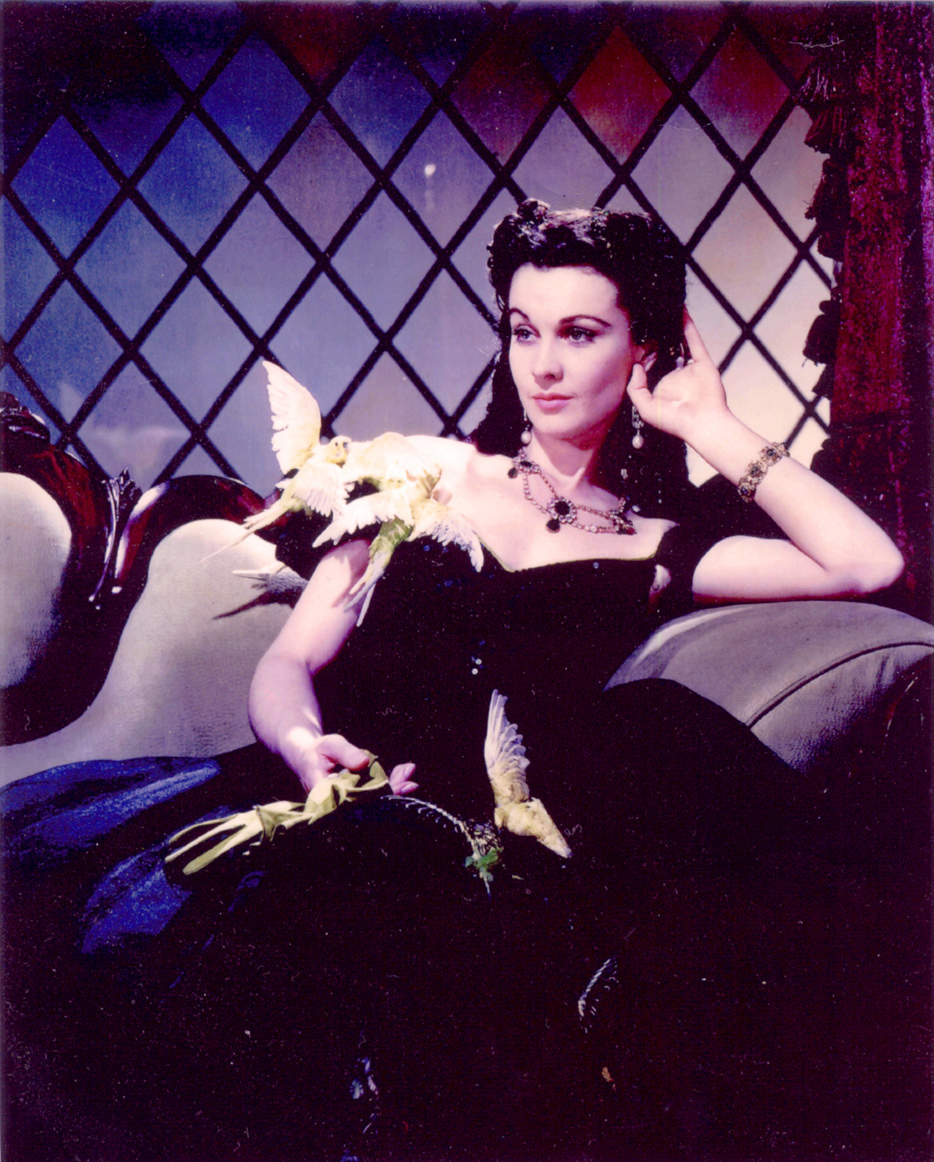Necklace and bracelet
Worn by Vivien Leigh in Gone With the Wind(1939)
Joseff of Hollywood
metal, glass
N1501, BC0003
L2014.3401.005, .006
R2014.3401.176.01-.02
Vivien Leigh
Clearly one of Joseff of Hollywood’s most important assignments, Gone with the Wind (1939), remains one of the most popular and commercially successful films ever made. Eugene Joseff worked with his friend and colleague Walter Plunkett, who designed the costumes for the film. Atlanta native Margaret Mitchell (1900–49) penned her novel of the Antebellum South, Civil War, and Reconstruction, while bedridden after an accident in 1926. Before the book was even published, producer David Selznick secured the film rights for fifty thousand dollars. The picture later won ten Academy Awards and grossed nearly one hundred and ninety-two million dollars.
The film’s two leading characters remain immortalized in the imaginations of fans—Rhett Butler (Clark Gable) and Scarlett O’Hara (Vivien Leigh). Although Clark Gable (1901–60) was the popular choice for leading man, he was hesitant to star in a historical drama. Gable felt that he would never be able to satisfy all the novel’s fans in his portrayal of Rhett. More than thirty actresses were screen-tested for the role of Scarlett, from Bette Davis to Lana Turner. But producer Selznick eventually chose English stage actress Vivien Leigh (1913–67) as the movie’s female lead despite public protest in favor of an American actress. An unknown in Hollywood then, today, it seems difficult to imagine anyone else in the role of Scarlett.


